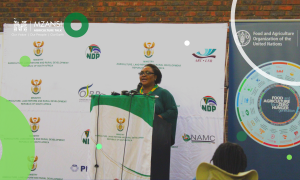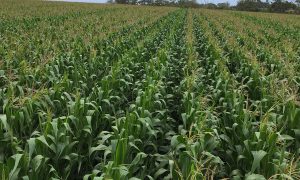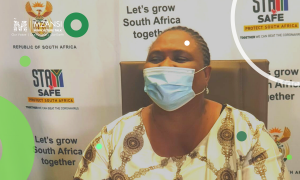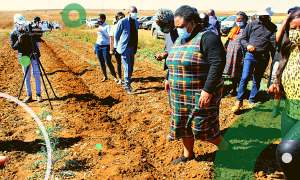Previously, Mzansi Agriculture Talk Covered Part 1 of the Agroforestry benefits for smallholder farmers article. In Part 2, Dr Phokele Maponya from the Agricultural Research Council (ARC), delves into the science of this untapped industry with Tebogo Magolego. We follow a case study, he and his team conducted in Limpopo on the success of Agroforestry in rural community farms.
Importance of Agroforestry practice.
TM: In your recent study of Agrisilviculural farming communities in Limpopo and Mpumalanga, you said they were more food secure than traditional farming areas, what was the basis of this?
DPM: In terms of food security there was no comparison between traditional farming areas and Agroforestry sites. The comparison between traditional farming areas and Agroforestry sites was for the climatic situation where for example the rainfall belt was evident in the Agroforestry sites. In addition, the food security comparison was based on the before and after intervention where data was taken before the community members were allocated resources for production and again after intervention data was taken. The Agrosilviculture community growers were also categorised in terms of food security, mildly food insecure, moderately food insecure and severely food insecure
TM: You are predicting that 33 years from now, Agroforestry sites will experience more rain than ordinary agricultural sites, please elaborate?
DPM: The following approach was used to determine average monthly rainfall: Decadal (ten day period) 1km x1km surfaces were created from rainfall data (1920 – 1999) downloaded from the AgroMet databank at the Agricultural Research Council- Soil, Climate and Water (ARC-SCW) (South African Weather Service and SCW weather stations) from stations with a recording period of 10 years or more. Regression analysis and spatial modelling were utilized taking into account topographic indices such as altitude, aspect, slope and distance to the sea during the development of the surface. Furthermore, the 33rd percentile explains that if there were 100 years of recorded data arranged in sequence from dry to wet, then the 33rd percentile would be the value of the 33rd year. In other words, the chances are good to exceed this rainfall, or the chances are small that you will have less rain.
TM: From an economic perspective, in your assessments are there benefits of Agroforestry for farmers?
DPM: In general, the economic Agroforestry benefits include generating employment and income. In the case of my findings, there is an evidence of the importance of Agroforestry systems, especially Silvipasture and Agrosilvipasture for supporting food production and income generation in Limpopo & Mpumalanga Provinces. Some farmers and community growers highlighted that they are generating income through renting of farms for grazing, selling trees to the communities to build shelter, kraals, medicinal purposes, firewood, etc., selling the crops in the informal market and a few selling in the formal market. Some community growers indicated that they were able to sell a minimum of 10 bags X 80kg of groundnuts at +R600 per row allocated.
TM: In your view, what should be farmers thinking right now on Agroforestry and could be done to get them there?
DPM: The Limpopo and Mpumalanga Provinces findings indicated the farmers and Agrosilviculture community growers’ perceptions regarding Agroforestry, which includes the following: The farmers and Agrosilviculture community growers indicated that the production factors, demand conditions, related and supporting industries, government support, chance, and market, firm strategy, structure and rivalry and research and academic institutions as causing a decrease in the Agroforestry competitiveness. The perceptions of the identified farmers and community growers are in line with some of the researcher’s field observations and it is thus recommended that stakeholders should take note of the constraints identified by the farmers and Agrosilviculture community growers in an attempt to increase Agroforestry competitiveness in South Africa.
TM: You are working with SAFCOL and others, what are the priorities to take it to other provinces?
DPM: The Agrosilviculture community growers’ model has now been rolled over to the Eastern Cape Province by the Department of Forestry, Fisheries and Environment (DEFF). The climatic analysis was conducted and maps drawn. The profitable and suitable crops like dry beans, sugar beans and groundnuts were recommended to the Department of Forestry, Fisheries and Environment (DFFE) for Agroforestry integration in the identified sites in the Eastern Cape Province. The current findings indicated that the identified Agroforestry sites satisfied the basic requirements for Agroforestry readiness i.e., good climatic condition, land availability, production inputs availability and communities’ socio-economic issues and involvement towards food security.
TM: Thanks Dr Maponya for illuminating us on this subject and for availing your time.
DPM: It is my pleasure and duty Sir.




















